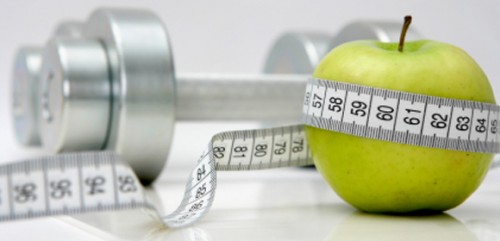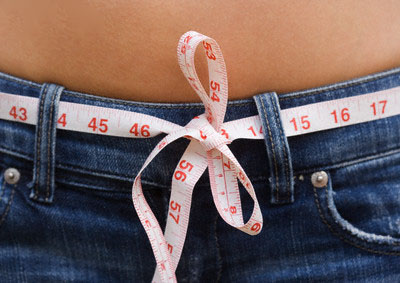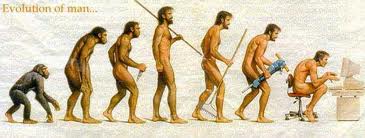
Critical Thinking: For our bodies to be healthy, the cells of our bodies need to be healthy. For the cells to be healthy, optimal amounts of proper nutrients must be supplied – from what we eat and drink in the form of fresh, organic, whole foods and purified water, and, if necessary, by taking nutritional supplements.
Best Practices: Take fish oil (Omega-3), probiotics, and a whole food supplement every day.
Vital Behaviors:
• Create the routine of taking supplements with breakfast (fish oil now comes lemon-flavored and makes a great addition to smoothies, either fruit smoothies or green smoothies).
• Make a rule that you cannot leave the house without taking your supplements.
• First action upon entering your kitchen each morning is to set out your supplements (yes, even before making coffee).
• Put your car keys in the fridge, next to the probiotics, so that you can’t leave the house without touching/taking your supplements.
As we eat, a balanced combination of nutrient-dense, whole foods makes it unnecessary to take a whole slew of vitamins or supplements. As a matter of fact, as outlined in the Bonfire Health ideal diet, there are a limited number of essential supplements. In order for a nutrient to qualify as an Essential Supplement, it must be an essential nutrient (it cannot be made by the body, and therefore it must be provided through our diets) and it must be difficult to consume adequate amounts in even the best diet. Remember, these are supplements, not replacements! Follow the Bonfire Health ideal diet and add the following:
1. Omega-3 Essential Fatty Acid (fish oil)
2. Probiotic
3. Whole Food Supplement
Supplements can fill in major gaps in your nutritional regimen; however, many people mistakenly believe that supplements can make up for poor eating habits. Nothing could be further from the truth. Supplements are meant to supplement your whole food diet, not act as replacements. At Bonfire Health, we have narrowed this concept down to what is called essential supplementation. Essential supplements are those that are either impossible or nearly impossible to get through the foods you eat.
Traditionally or historically, “vitamins” have been formulated from bulk pharmaceutical chemicals such as vitamin A, vitamin B, etc. Unfortunately this has resulted in very few nutrients being identified, labeled or included as critical nutrients or “vitamins.” We now know though that all fresh, whole foods contain dozens, if not hundreds, perhaps even thousands, of nutrients. That’s why it’s so critical to take a supplement made from whole foods, not over-the-counter “vitamin formulas” like Centrum or “One-A-Day” brands, which are made from bulk pharmaceutical chemicals.
What we now know is that there are literally thousands of compounds or nutrients that exist in food, in nature. An apple, for example, may contain perhaps a thousand or more “phytonutrients,” none of which have been isolated or named, per se as a “vitamin” (see side bar on right). This is why it’s critical to only put into your body food, or things made of food; this includes your “vitamins” or supplements.
1) Essential Fatty Acids (EFA): There are a group of critical nutrients called essential fatty acids (commonly known as “omega fatty acids”). They play a role in virtually every cellular function within the body:
“The dietary fatty acids of the omega-3 series are rapidly incorporated into cell membranes and profoundly influence biological responses. In well-controlled clinical studies, consumption of omega-3 fatty acids has resulted in reduction of cardiovascular diseases including arrhythmias and hypertension, protection from renal disease, improvement in rheumatoid arthritis, improvement in inflammatory bowel diseases, reduced episodes of rejection, and protection from infection.”
[Alexander, JW, Immunonutrition: the role of omega-3 fatty acids. Nutrition July 1998, 14 (7): pp. 627-633 view abstract]
Modern man in general, and Americans in particular, are severely deficient in this group of critically essential nutrients called fatty acids. Not only are we deficient, but what fatty acids we do take in through our diet are dangerously imbalanced. Fatty acid balance is one of the “seven fundamentally altered nutritional characteristics of our ancestral (genetically congruent) diet.” [Mann NJ, Paleolithic Nutrition: What can we learn from the past? Asia Pacific Journal of Clinical Nutrition, 2004; 13 (suppl.): S17] view article
To simplify, there are two primary essential fatty acids: Omega-6 and Omega-3 EFA. Within the body, they should exist in an approximate ratio of 2:1 (Omega-6 to Omega-3). Current estimates show a severely disproportionate amount of Omega-6 from the modern diet, now creating a ratio between 15:1 and 22:1. What makes this even worse is the modern diet is now toxic with unhealthy forms of Omega-6 EFA found in hydrogenated and partially hydrogenated oils, and fried foods.
Again, to simplify this discussion, the focus is really on deficiencies in Omega-3 EFAcombined with an overabundance of Omega-6 EFA.
So What’s The Answer?
Take an Omega-3 essential fatty acid supplement; meaning purified fish oil. The good news is that fish oil now comes lemon-flavored, so it’s tasty by itself or as an excellent ingredient in smoothies. It also must be said at this juncture that it’s equally critical to minimize your intake of grains because one of the primary causes of an imbalance in Omega-6 comes from an excessive dietary intake of all grains, especially refined grains (i.e. wheat flour products like bread, cereals, pasta, crackers, cookies, cakes, etc.), as well as grain-fed meats.
2) Probiotics: Probiotics are the natural “friendly” bacteria living within our bodies which play a critical role in immunity (current science has estimated that 80% of your immune system is located in the digestive system), digestion and nutrient synthesis and delivery. Our bodies should have trillions of healthy probiotic bacteria present mainly in our large intestine, and to a lesser degree the stomach, small intestine, mouth, and vagina. The problem is that today, modern man has deviated so far from eating fresh, high fiber fruits and vegetables, that “the daily present-age consumption of bacteria is a million times less than what was consumed by our Stone Age (Paleolithic) ancestors.” [Bengmark S, Immunonutrition: Role of biosurfactants, fiber, and probiotic bacteria. Nutrition Journal1998: 14:585-594]. The important fact here is that we are genetically identical to the Stone Age ancestors that Bengmark is referring to.
The Functions of Probiotic Bacteria:
• Eliminate harmful viruses, bacteria and yeast
• Reduce inflammation
• Fermentation and digestion of fiber
• Promote proper digestion, absorption and elimination
• Prevent diarrhea, bloating, gas, and constipation
• Protect mucosal lining of the stomach, small and large intestines, and vagina
• Support healthy immune function
• Increase resistance to infection
• Help keep skin healthy
• Assist in the production and delivery of vitamins
The critical functions of probiotics include: digestion (especially the digestion of fiber), the synthesis and delivery of several vitamins (thiamine, folic acid, nicotinic acid, pyridoxine, and B12), as well as enzyme production, and inflammatory and immune response.
3) Whole Food Supplements: Most people know they should take a “vitamin.” Any nutrient we put into our bodies should be made from food, not chemicals made to resemble what’s found in nature or what’s been isolated and fractionated from the “real thing.” Brands such as One-A-Day or Centrum are NOT the answer. These types of “vitamins” are made from bulk pharmaceutical chemicals. The only supplements we should ever take MUST be made from whole foods, not isolated chemicals.
When formulating a whole food supplement, various plant foods, such as fruits and vegetables, sea vegetables, herbs, nuts, seeds, and grains are either juiced and dried, and/or ground up to be formulated into capsules or a powdered drink. The obvious limitation to any supplement, even whole food supplements, is that it’s not the real thing (meaning fresh, whole food); that being said, the vitamins, minerals, and trace elements that are found in whole food supplements are significant and can go a long way in augmenting one’s nutritional status and health.












